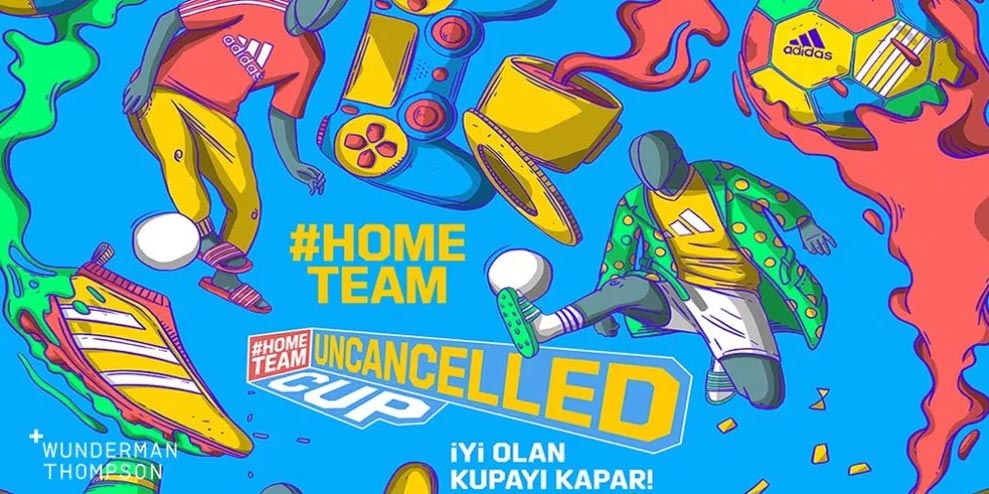Gaming has always been valuable, but underutilized by advertisers — until now.
Fortnite reinvigorated casual gaming for a variety of audiences, and stay at home orders has done the same for advertisers. Whether it’s a sharp increase in Twitch viewership or a jump in esports influencers on TikTok, people are playing and watching games to keep themselves distracted during these difficult times.
“All the consumption of gaming during the lockdown has further legitimized it as a proper entertainment marketing vehicle,” said Misha Sher, Mediacom’s worldwide vp of sport and entertainment.
In particular, there’s growing interest in how to run campaigns inside of video games. In-game events, whether it’s a Travis Scott rap concert in Fortnite or a football tournament recreated in FIFA 20, are giving advertisers a better understanding of the opportunities for gaming partnerships. Unlike previous forays into in-game advertising, advertisers see current opportunities more like extensions of social media strategies than a way to get an ad on a virtual billboard.
“It’s clear that gaming is the new frontier of social media, and this groundswell around gaming drives innovation across technology, advertising, and more, and brands are eager to be a part of that future,” said Abby Long, content editor at digital agency PMG.
Adidas recreated the canceled European Championship in the FIFA Playstation video game last month as a way to offset some of the inventory it lost from the live matches. Matches between 12 footballers and 12 celebrities were live-streamed across Adidas’ Facebook Live, IGTV and YouTube Live profiles in Turkey. Aside from all the players wearing Adidas-branded apparel in those broadcasts, its logo was also visible in the game thanks to it being a kit manufacturer and sponsor for many of the teams recreated in the game. In other words, Adidas turned the FIFA game into a straightforward sponsorship opportunity but found a way to amplify it across its main social networks.
So far the results have been encouraging for Adidas.
Live audiences for the virtual matches have so far been twice the size of those for Turkey’s top football league, according to Adidas. To date, the matches have generated around 1.2 million viewers who watch between 20 and 40 mins of a match. The popularity of the matches is also having a material effect on the business. Adidas shopping app downloads in Turkey have doubled since the beginning of the campaign that’s fuelled a 25% rise in daily revenue from the app, per Adidas.
Adidas’ test shows the importance of distribution in getting advertisers to commit to in-game ads. It’s part of the reason why developers like Electronic Arts are trying to broker more deals with broadcasters to show their esports events on TV.
“The value of our in-game executions goes up as the viewership of our games goes up,” said Todd Sitrin, general manager of the Competitive Gaming Division at Electronic Arts.
“We’ve been able to do greater deal value in the last six months — even in the last two months — because markers want our content because they now know it will resonate with a younger audience.”
This period of forced experimentation from advertisers is forcing a shift in the commercial ecosystem from developers and the ad tech vendors they work with. Indeed, developer Codemasters agreed to let ad tech vendor Bidstack serve native in-game ads into its upcoming 2020 racing title DIRT 5 in March. MG is already using Bidstack to serve contextually relevant ads into the developer’s older driving simulators.
Similarly, Riot Games will feature in-game ads during broadcasts of its League of Legends tournaments. The ads appear on banners dotted throughout one of the game’s most popular arenas, meaning both players and their fans will see them during the broadcast. More than 100 million viewers watched the League of Legends World Championship last year, per Riot Games. Keen to capitalize on those audiences, Mastercard and Alienware are among the first few advertisers to buy the ads. Riot plans to have different advertisers in each of its 12 regional leagues.
“These banners are going to be some of the most valuable media assets in our portfolio because of all the attention we have from viewers on the gameplay,” said Naz Aletaha, head of global esports partnerships at Riot Games. “It opens up a whole new arena for us given that these sorts of opportunities have been limited to only those fans at our in-person events.”
“We’re taking into consideration similar metrics to what you would see in other media deals like frequency and the number of impressions on offer, which varies based on how the game is played,” said Aletaha.
Despite the growing interest in gaming, measurement continues to be a barrier for many advertisers. The varying viewership statistics for the recent Travis Scott concerts are a timely reminder of just how challenging it is to measure viewership in such a virtual and social environment.
“Between dozens of live streamers attracting audiences of thousands of viewers for any single event, combined with the subsequent YouTube videos garnering millions of viewers, it’s near impossible to tally the reach of an in-game event and how it’s shared online,” said PMG’s Long
–
This article first appeared in www.digiday.com
Seeking to build and grow your brand using the force of consumer insight, strategic foresight, creative disruption and technology prowess? Talk to us at +971 50 6254340 or mail: engage@groupisd.com or visit www.groupisd.com/story




